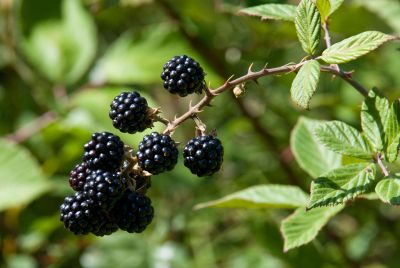Growing Blackberries from Cuttings
Blackberries can be propagated through leafy stem cuttings as well as root cuttings. If you want to propagate lots of plants, leafy stem cuttings are probably the best way to go. This is usually accomplished while the cane is still firm and succulent. You’ll want to take about 4-6 inches (10-15 cm.) of the cane stems. These should be placed in a moist peat/sand mix, sticking them in a couple inches deep. Note: Rooting hormone can be used but is not necessary. Mist well and put them in a shady location. Within three to four weeks, roots should begin to develop. More often root cuttings are taken for blackberry propagation. These cuttings, which are usually anywhere from 3-6 inches (7.5-15 cm.) long, are taken in fall during dormancy. They usually require about a three-week cold storage period, especially plants having larger roots. Straight cuts should be made nearest the crown with an angled cut made further away. Once the cuttings have been taken, they’re usually bundled together (with similar cuts end to end) and then cold stored at about 40 degrees F. (4 C.) outdoors in a dry area or in the refrigerator. After this cold period, like stem cuttings, they are placed in a moist peat and sand mix—about 2-3 inches (5-7.5 cm.) apart with straight ends inserted a couple inches into soil. With small-rooted cuttings, only small 2-inch (5 cm.) sections are taken. These are placed horizontally over the moist peat/sand mix and then lightly covered. It is then covered in clear plastic and placed in a shady location until new shoots appear. Once they’re rooted, all the cuttings can be planted into the garden.
Propagating Blackberries through Suckers & Tip Layering
Suckers are one of the easiest ways to root blackberry plants. Suckers can be removed from the parent plant and then replanted elsewhere. Tip layering is another method that can be used for blackberry propagation. This works well for trailing types and when only a few plants are needed. Tip layering usually takes place in late summer/early fall. The young shoots are simply bent over to the ground and then covered with a few inches of soil. This is then left throughout fall and winter. By spring there should be enough root formation to cut the plants away from the parent and replant elsewhere.
